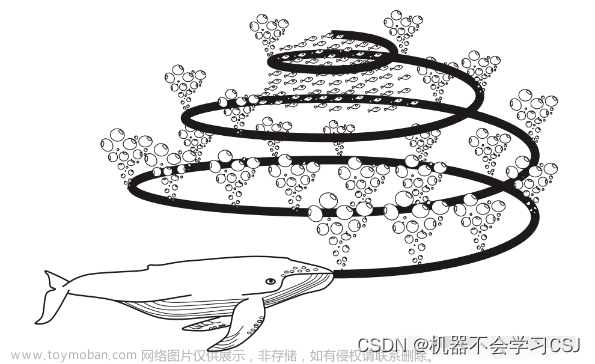在给定的代码中,您想要引入自适应注意力机制。自适应注意力机制通常用于增强模型的感受野,从而帮助模型更好地捕捉特征之间的关系。在这里,我将展示如何在您的代码中引入自适应注意力机制,并提供详细的解释。
首先,让我们导入自适应注意力机制的相关模块。假设您已经有了实现自适应注意力的模块,我们将其命名为 AdaptiveAttention。
import torch
import torch.nn as nn
from pcdet.models.model_utils.basic_block_2d import BasicBlock2D
from your_module_path.adaptive_attention import AdaptiveAttention # 导入自适应注意力模块,确保替换成实际的模块路径
class Conv2DCollapse(nn.Module):
def __init__(self, model_cfg, grid_size):
"""
Initializes 2D convolution collapse module
Args:
model_cfg: EasyDict, Model configuration
grid_size: (X, Y, Z) Voxel grid size
"""
super().__init__()
self.model_cfg = model_cfg
self.num_heights = grid_size[-1]
self.num_bev_features = self.model_cfg.NUM_BEV_FEATURES
self.block = BasicBlock2D(in_channels=self.num_bev_features * self.num_heights,
out_channels=self.num_bev_features,
**self.model_cfg.ARGS)
self.attention = AdaptiveAttention(in_channels=self.num_bev_features,
**self.model_cfg.ATTENTION_ARGS) # 初始化自适应注意力模块
def forward(self, batch_dict):
"""
Collapses voxel features to BEV via concatenation and channel reduction
Args:
batch_dict:
voxel_features: (B, C, Z, Y, X), Voxel feature representation
Returns:
batch_dict:
spatial_features: (B, C, Y, X), BEV feature representation
"""
voxel_features = batch_dict["voxel_features"]
bev_features = voxel_features.flatten(start_dim=1, end_dim=2) # (B, C, Z, Y, X) -> (B, C*Z, Y, X)
bev_features = self.block(bev_features) # (B, C*Z, Y, X) -> (B, C, Y, X)
# 应用自适应注意力
attended_features = self.attention(bev_features)
batch_dict["spatial_features"] = attended_features
return batch_dict
在上面的代码中,我们添加了一个名为 AdaptiveAttention 的自适应注意力模块,该模块应该实现根据输入特征计算注意力加权后的特征。注意,您需要替换 your_module_path.adaptive_attention 为实际的自适应注意力模块路径。
总之,您可以通过在卷积坍缩模块中引入自适应注意力来增强模型的感受野,以便更好地捕获特征之间的关系。
您可以单独编写一个自适应注意力模块并将其导入到您的主代码中。我会提供一个简单的自适应注意力模块示例,然后展示如何将其与您的主代码整合起来。请注意,这只是一个基本示例,您可以根据需要进行修改和扩展。
首先,让我们创建一个名为 adaptive_attention.py 的文件,并在其中编写自适应注意力模块的代码:
import torch
import torch.nn as nn
class AdaptiveAttention(nn.Module):
def __init__(self, in_channels, reduction_ratio=8):
"""
Initializes the adaptive attention module
Args:
in_channels: int, Number of input channels
reduction_ratio: int, Reduction ratio for feature transformation
"""
super(AdaptiveAttention, self).__init__()
self.pool = nn.AdaptiveAvgPool2d(1)
self.fc = nn.Sequential(
nn.Linear(in_channels, in_channels // reduction_ratio),
nn.ReLU(inplace=True),
nn.Linear(in_channels // reduction_ratio, in_channels),
nn.Sigmoid()
)
def forward(self, x):
"""
Forward pass of the adaptive attention module
Args:
x: Input feature tensor (B, C, H, W)
Returns:
out: Output attention-weighted feature tensor
"""
batch_size, channels, height, width = x.size()
y = self.pool(x).view(batch_size, channels)
y = self.fc(y).view(batch_size, channels, 1, 1)
out = x * y.expand_as(x)
return out
在上面的代码中,我们定义了一个简单的自适应注意力模块 AdaptiveAttention,它在输入特征的每个通道上计算注意力权重,并将这些权重应用于输入特征。文章来源:https://www.toymoban.com/news/detail-658938.html
现在,您可以将这个文件保存为 adaptive_attention.py,然后将其与您的主代码整合起来。假设您的主代码是在一个名为 main.py 的文件中。下面是如何导入和使用自适应注意力模块的示例:文章来源地址https://www.toymoban.com/news/detail-658938.html
import torch
import torch.nn as nn
from adaptive_attention import AdaptiveAttention # 导入自适应注意力模块
# ... 其他导入和定义 ...
class Conv2DCollapse(nn.Module):
def __init__(self, model_cfg, grid_size):
# ... 其他初始化 ...
self.attention = AdaptiveAttention(in_channels=self.num_bev_features)
def forward(self, batch_dict):
# ... 其他前向传播代码 ...
attended_features = self.attention(bev_features)
batch_dict["spatial_features"] = attended_features
return batch_dict
# ... 后续代码 ...
到了这里,关于pointpillars在2D CNN引入自适应注意力机制的文章就介绍完了。如果您还想了解更多内容,请在右上角搜索TOY模板网以前的文章或继续浏览下面的相关文章,希望大家以后多多支持TOY模板网!




![[YOLOv7/YOLOv5系列算法改进NO.33]引入GAMAttention注意力机制](https://imgs.yssmx.com/Uploads/2024/02/742094-1.png)







